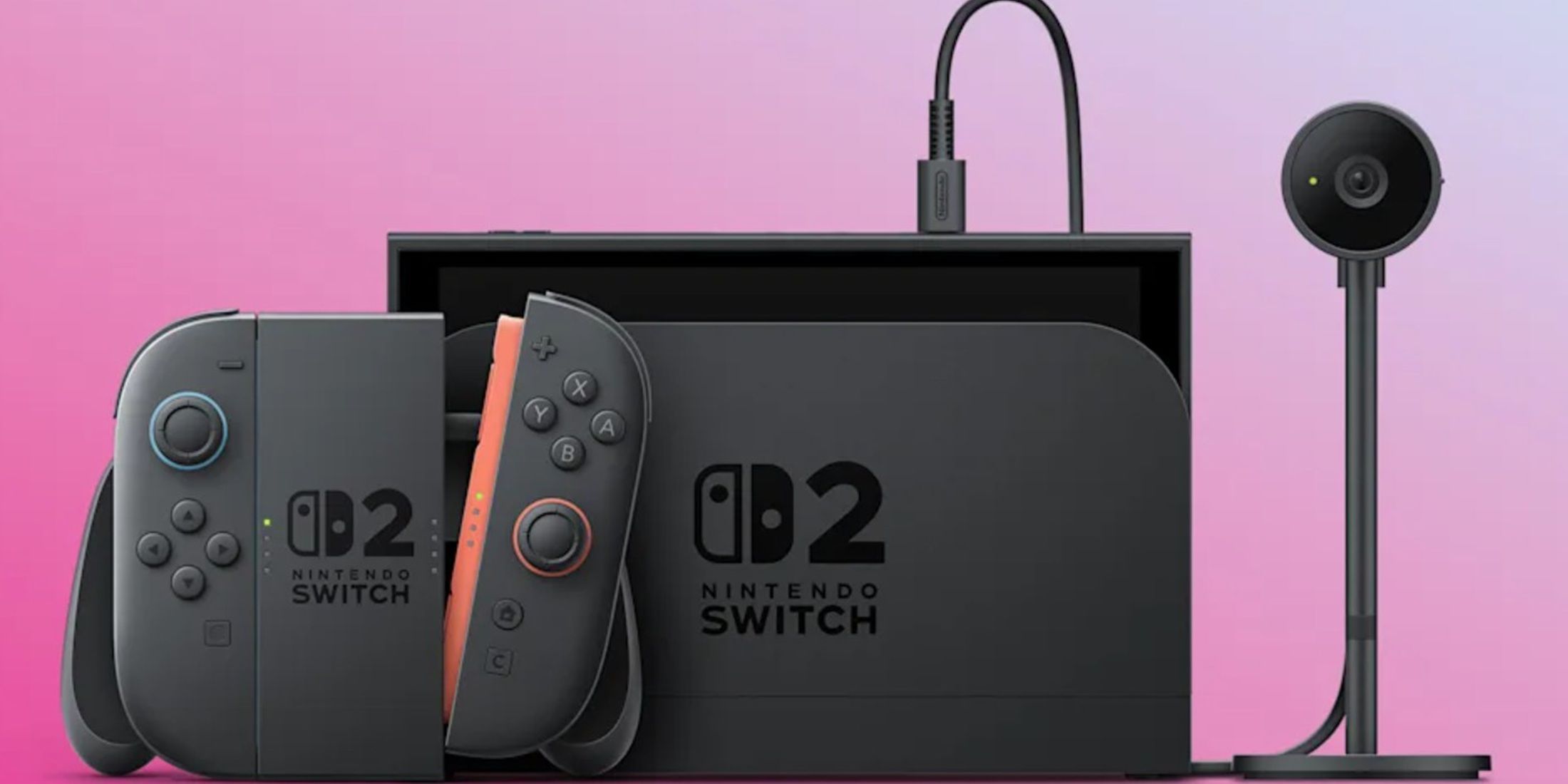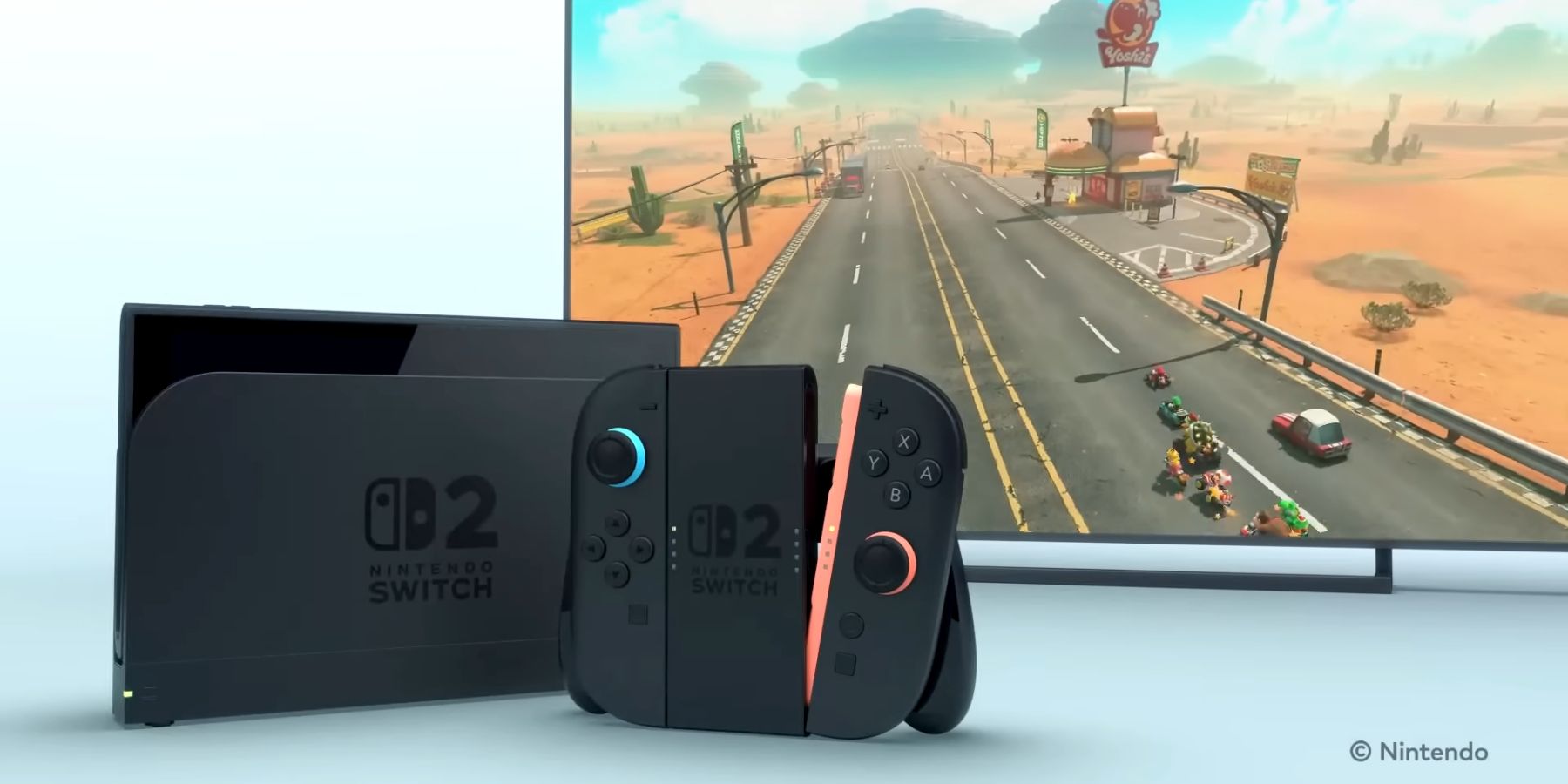
The long-awaited unveiling of the Nintendo Switch 2 leaves no doubt about its significant upgrade from its forerunner. The enhanced power of the Switch 2 is so substantial that it will accommodate third-party games such as Cyberpunk 2077 and Elden Ring, titles which would have been inconceivable on the original Switch.
The new Switch 2 model boasts several high-end features similar to other contemporary gaming consoles: it can achieve framerates of up to 120 FPS and support 4K resolution when connected, and NVIDIA has announced that ray-tracing and DLSS technologies will be integrated into the new system. These advanced capabilities were often absent in the original Switch, which was frequently criticized for its lower quality compared to competitors like PlayStation and Xbox. While it remains doubtful that the Switch 2 will rival the PS5 or Xbox Series X in terms of technical prowess, the improvements Nintendo is making are still encouraging, particularly for third-party games. However, one significant feature from the initial Switch has been omitted, which seems somewhat unusual.
The Nintendo Switch 2 Won’t Be Launching With an OLED Model





The Nintendo Switch 2’s Lack of an OLED Display Is Puzzling
During the original Nintendo Switch’s lifespan, the most notable hardware upgrade was the introduction of the Nintendo Switch OLED. This variant of the console features a larger, higher-quality handheld screen compared to the standard version. The ‘OLED’, which stands for organic light-emitting diode, is its main difference from the base model and brings several benefits along with it.
Generally speaking, OLED screens tend to offer a more vivid and true-to-life visual experience compared to LCDs, such as those found in the original Switch and its successor, the Switch 2. This is due to their unique structure: instead of being backlit like LCDs, each diode in an OLED screen is transparent and produces its own light. As a result, images appear brighter with improved contrast. Furthermore, OLED screens are more energy-efficient because individual diodes can be dimmed or switched off as needed. In summary, OLED displays offer better brightness, longer battery life, and superior image quality compared to other types of electronic screens. Additionally, they are often lighter and more flexible, which can lead to improved device construction.
Organic Light Emitting Diodes (OLEDs) are typically more environmentally friendly compared to other display technologies. This is because they are constructed using organic substances and generate less pollution.
As a dedicated cinema enthusiast, it feels peculiar that the Nintendo Switch 2 won’t feature OLED technology at launch, given how significantly this display type has shaped the second half of the original Switch’s legacy. While it’s hopeful that the Switch 2 might receive an upgrade to OLED down the line, it seems that for now, the focus lies elsewhere in terms of visual enhancements.
Why Nintendo May Have Opted to Omit an OLED Display for the Switch 2
The choice by Nintendo to skip the OLED screen for its next Switch model might appear puzzling at first glance, but it’s likely driven by some practical considerations. Although OLED screens outperform LCDs in numerous aspects, they come with a hefty price tag and have a shorter lifespan due to their sensitivity to heat and humidity damage. Additionally, they are prone to burn-in, where a fixed image becomes permanently etched due to component degradation over time.
It appears that Nintendo may have opted not to include an OLED screen in the Switch 2 to keep its price competitive. Given that Nintendo’s consoles prioritize accessibility and mass appeal over high-end hardware specifications, it makes sense that the additional features of the Switch 2, such as higher FPS and ray-tracing, might increase manufacturing costs. In other words, the absence of an OLED screen in the Switch 2 could be a strategic decision to balance cost and potential benefits.
Read More
- Byler Confirmed? Mike and Will’s Relationship in Stranger Things Season 5
- One-Way Quantum Streets: Superconducting Diodes Enable Directional Entanglement
- Best Job for Main Character in Octopath Traveler 0
- Quantum Circuits Reveal Hidden Connections to Gauge Theory
- Entangling Bosonic Qubits: A Step Towards Fault-Tolerant Quantum Computation
- All Exploration Challenges & Rewards in Battlefield 6 Redsec
- Upload Labs: Beginner Tips & Tricks
- How to Get to Serenity Island in Infinity Nikki
- Star Wars: Zero Company – The Clone Wars Strategy Game You Didn’t Know You Needed
- Hearthstone: 8 Most Overpowered Cards Of All Time, Ranked
2025-04-06 22:07